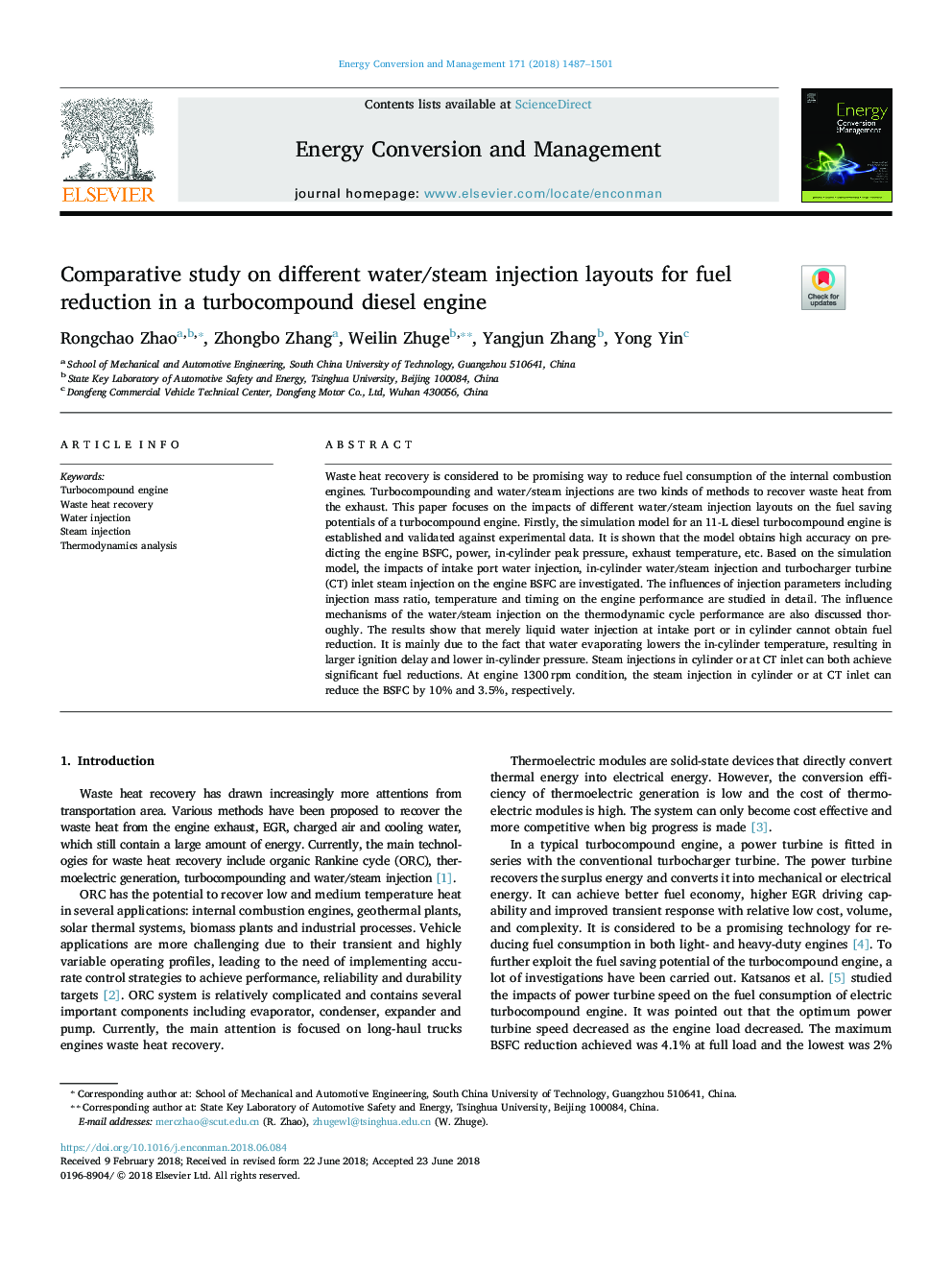| کد مقاله | کد نشریه | سال انتشار | مقاله انگلیسی | نسخه تمام متن |
|---|---|---|---|---|
| 7158102 | 1462791 | 2018 | 15 صفحه PDF | دانلود رایگان |
عنوان انگلیسی مقاله ISI
Comparative study on different water/steam injection layouts for fuel reduction in a turbocompound diesel engine
ترجمه فارسی عنوان
مطالعه مقایسه ای در طرح های مختلف تزریق آب / بخار برای کاهش سوخت در یک موتور دیزل توربو کامپوزیت
دانلود مقاله + سفارش ترجمه
دانلود مقاله ISI انگلیسی
رایگان برای ایرانیان
کلمات کلیدی
موتور توربوپانچر، بازیابی گرما زباله، تزریق آب تزریق بخار، تجزیه و تحلیل ترمودینامیکی،
موضوعات مرتبط
مهندسی و علوم پایه
مهندسی انرژی
انرژی (عمومی)
چکیده انگلیسی
Waste heat recovery is considered to be promising way to reduce fuel consumption of the internal combustion engines. Turbocompounding and water/steam injections are two kinds of methods to recover waste heat from the exhaust. This paper focuses on the impacts of different water/steam injection layouts on the fuel saving potentials of a turbocompound engine. Firstly, the simulation model for an 11-L diesel turbocompound engine is established and validated against experimental data. It is shown that the model obtains high accuracy on predicting the engine BSFC, power, in-cylinder peak pressure, exhaust temperature, etc. Based on the simulation model, the impacts of intake port water injection, in-cylinder water/steam injection and turbocharger turbine (CT) inlet steam injection on the engine BSFC are investigated. The influences of injection parameters including injection mass ratio, temperature and timing on the engine performance are studied in detail. The influence mechanisms of the water/steam injection on the thermodynamic cycle performance are also discussed thoroughly. The results show that merely liquid water injection at intake port or in cylinder cannot obtain fuel reduction. It is mainly due to the fact that water evaporating lowers the in-cylinder temperature, resulting in larger ignition delay and lower in-cylinder pressure. Steam injections in cylinder or at CT inlet can both achieve significant fuel reductions. At engine 1300â¯rpm condition, the steam injection in cylinder or at CT inlet can reduce the BSFC by 10% and 3.5%, respectively.
ناشر
Database: Elsevier - ScienceDirect (ساینس دایرکت)
Journal: Energy Conversion and Management - Volume 171, 1 September 2018, Pages 1487-1501
Journal: Energy Conversion and Management - Volume 171, 1 September 2018, Pages 1487-1501
نویسندگان
Rongchao Zhao, Zhongbo Zhang, Weilin Zhuge, Yangjun Zhang, Yong Yin,
